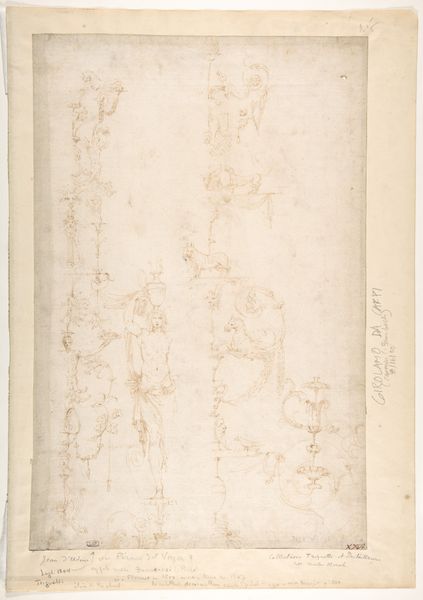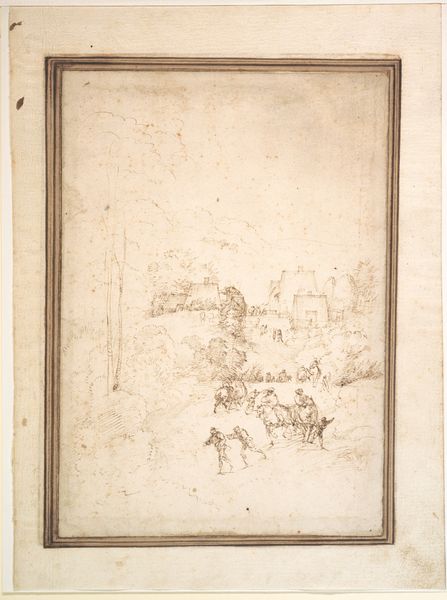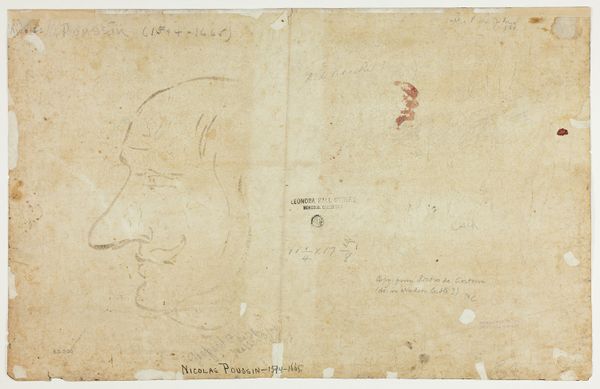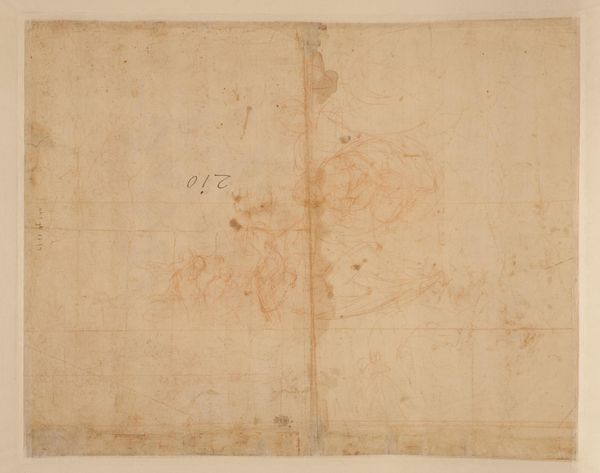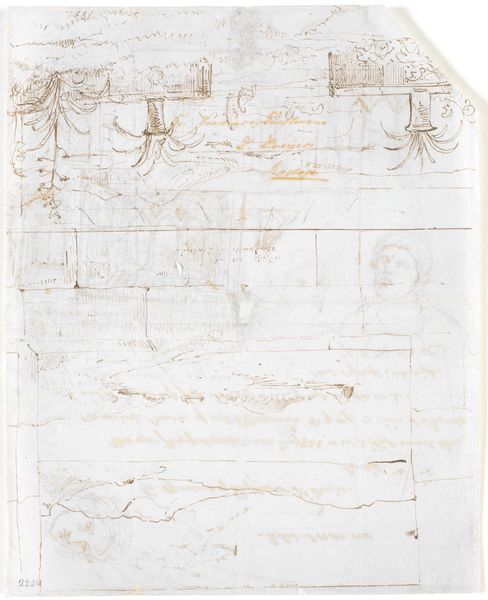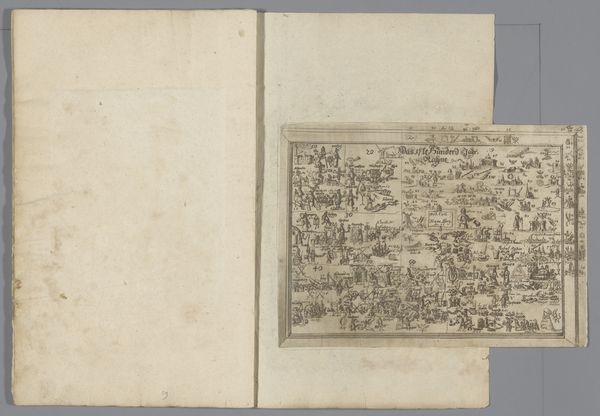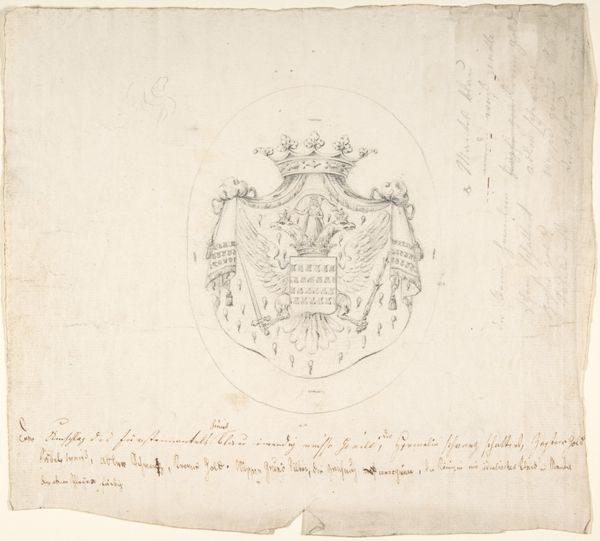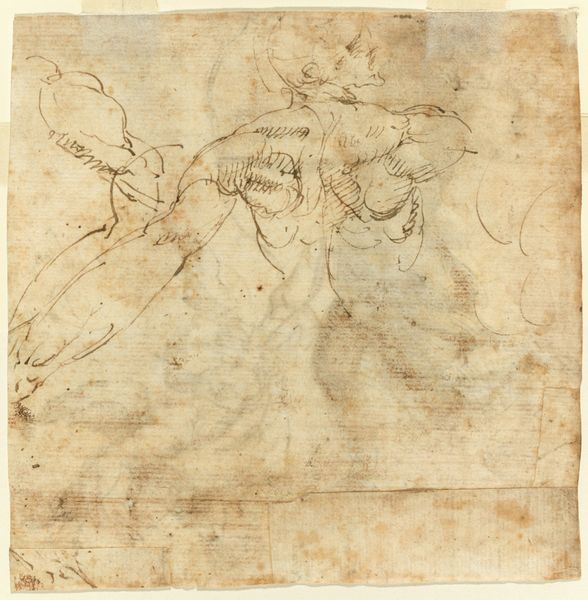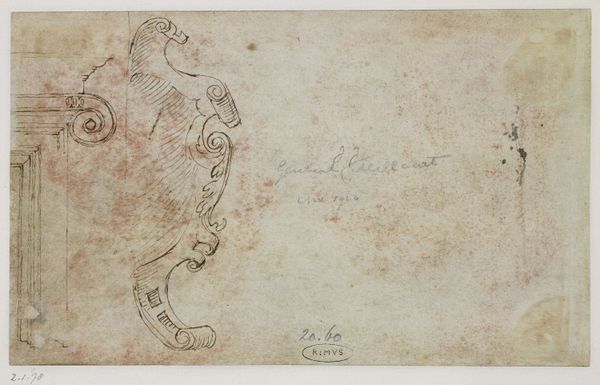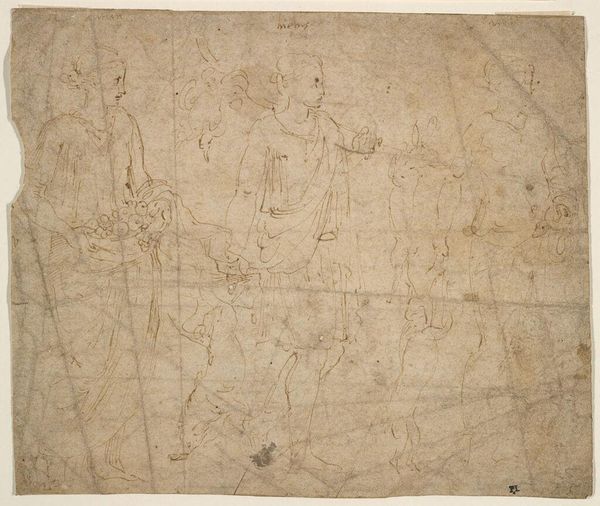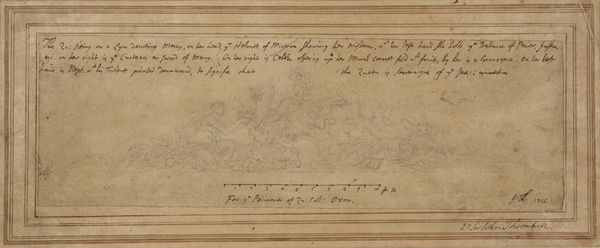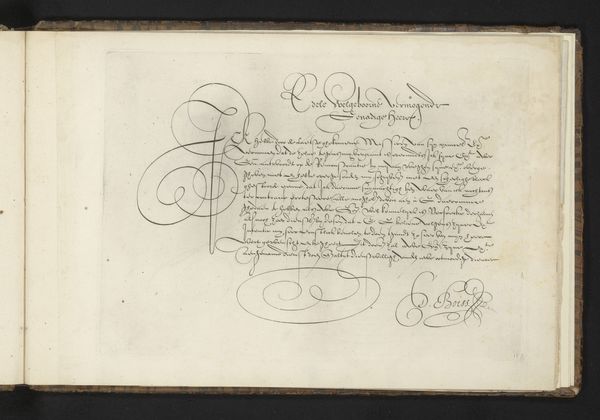
T.h. en sacra conversazione med Hl.Petrus Martyr, Hl.Sebastian, Hl.Lucia og Hl.Roccus omkring Maria med Jesus-barnet. Helgenerne identificeret med kunstnerens egenhændige påskrift 1561 - 1630
0:00
0:00
drawing, paper, ink
#
portrait
#
drawing
#
figuration
#
paper
#
11_renaissance
#
ink
#
italian-renaissance
Dimensions: 223 mm (height) x 333 mm (width) (bladmaal)
Editor: This drawing, "T.h. en sacra conversazione med Hl.Petrus Martyr, Hl.Sebastian, Hl.Lucia og Hl.Roccus omkring Maria med Jesus-barnet" by Giovanni Battista della Rovere, rendered in ink on paper, shows a scene of Madonna and child with saints. The drawing feels like a quick sketch or a study. What do you see in this work, focusing on the materials and production of it? Curator: This is fascinating as an artifact of artistic labor. Consider the paper itself – likely handmade, its fibers bearing witness to the industrial processes of the time. The ink, its composition debated among workshops, allows us to consider the chemistry of colour production. How do these aspects challenge our notions of “high art” versus craft? Editor: It's interesting that you focus on the paper and ink themselves. I hadn't really considered that before. Does this approach change how we understand the drawing’s meaning? Curator: Absolutely. By analyzing the materials, we shift the focus away from solely interpreting religious symbolism. Think about who would have had access to quality paper and ink during that period. What does that tell us about the social context and intended audience for such a drawing? Was it a preliminary sketch, or was it produced to demonstrate the artist’s ability for a patron? Editor: I guess thinking about the production puts the focus more on the socioeconomic realities and less on just the iconography of the work itself. It’s more about the 'who' and the 'how' than just the 'what'. Curator: Precisely. Examining the materiality allows us to understand art not just as an aesthetic object but as a product of labor and consumption deeply embedded in its time. Editor: So, from my side, understanding the 'how' makes me appreciate this as an object made within material constraints, reflecting wider industrial processes, but also the power and labour inherent in making it. It also has a bit of an unfinished feeling! Thanks for opening my eyes to that. Curator: And from my side, perhaps considering the spiritual impact of such a religious image might encourage further avenues for interpreting how viewers were likely to respond to the artistic statement.
Comments
No comments
Be the first to comment and join the conversation on the ultimate creative platform.
